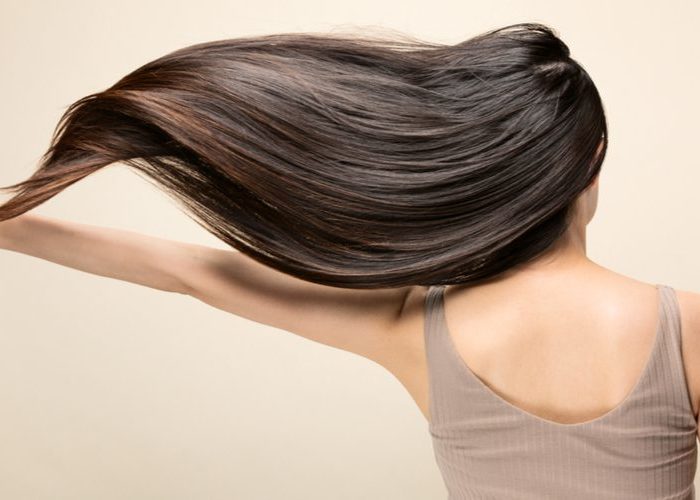
Understanding and Caring for Low Porosity Hair: A Comprehensive Guide
Introduction: Low porosity hair is a unique hair type characterized by tightly sealed cuticles that resist moisture absorption. This hair type can present challenges when it comes to styling, moisturizing, and maintaining overall hair health. However, armed with the right knowledge and care techniques, individuals with low porosity hair can embrace and enhance their natural beauty. In this comprehensive guide, we will explore the characteristics of low-porosity hair, discuss common challenges, and provide practical tips for caring for and styling low-porosity hair.
Section 1: Understanding Hair Porosity
A. Definition and Importance: Hair porosity refers to the hair’s ability to absorb and retain moisture. It is determined by the condition of the hair’s cuticle layer, which can be either tightly closed (low porosity), slightly raised (normal porosity), or highly raised (high porosity). Understanding hair porosity is crucial as it helps in selecting the appropriate hair care products and methods for effective moisturization and styling.
b. Types of Hair Porosity: i. Low Porosity: Tightly sealed cuticles make it challenging for moisture to penetrate the hair shaft. ii. Normal Porosity: The cuticles are slightly raised, allowing moisture to enter and be retained in the hair. iii. High Porosity: Damaged or raised cuticles result in rapid moisture absorption and loss.
Section 2: Characteristics of Low Porosity Hair
A. Definition and Identification: Low porosity hair is characterized by its resistance to moisture absorption, leading to products sitting on top of the hair rather than being absorbed. It often appears shiny, feels smooth to the touch, and takes longer to wet or dry compared to other hair types. Identifying low porosity hair involves performing a simple porosity test, such as the float test or the strand test.
b. Causes of Low Porosity Hair: Low porosity hair can be influenced by various factors, including genetics, hair damage, and environmental conditions. Factors such as tightly packed cuticles, certain hair treatments (like chemical processing), and even water quality can contribute to low porosity hair.
Section 3: Challenges Faced by Low Porosity Hair
A. Difficulty in Moisture Absorption: The tightly sealed cuticles of low porosity hair make it challenging for moisture to penetrate, resulting in dryness and potential breakage if not properly addressed.
b. Product Buildup: Low porosity hair is more prone to product buildup since the cuticles resist penetration. This buildup can leave the hair feeling weighed down, dull, and unresponsive to styling.
c. Slow Drying Time: Due to the resistant nature of low porosity hair, it can take longer to dry, making it more susceptible to fungal or bacterial growth if not properly dried.
Section 4: Caring for Low Porosity Hair
A. Clarifying and Removing Buildup: Regular clarifying shampoos or apple cider vinegar rinses can help remove product buildup, allowing for better moisture absorption.
b. Moisturizing Techniques: Pre-pooing, deep conditioning with heat, and using lightweight water-based moisturizers are effective ways to hydrate low-porosity hair.
c. Heat and Steam Treatments: Incorporating gentle heat or steam during deep conditioning sessions can help open the cuticles, allowing for better product penetration.
d. Protective Styling: Protective styles such as braids, twists, and updos help to minimize manipulation and reduce moisture loss in low porosity hair.
Section 5: Styling Tips for Low Porosity Hair
A. Choosing the Right Products: Opt for lightweight, water-based products that can be easily absorbed. Look for ingredients such as aloe vera, glycerin, and panthenol that attract and retain moisture.
b. Optimal Styling Techniques: Applying products on damp hair, using the “LOC” (liquid, oil, cream) or “LCO” (liquid, cream, oil) method, and finger-detangling are beneficial techniques for low porosity hair.
c. Avoiding Excessive Heat: Limit the use of heat styling tools and opt for heatless styling methods to minimize damage and moisture loss.
Section 6: Maintaining Healthy Low Porosity Hair
A. Regular Trimming: Consistent trims help to remove split ends and prevent further damage, promoting healthier hair growth.
b. Proper Nutrition and Hydration: A well-balanced diet, rich in vitamins, minerals, and omega-3 fatty acids, promotes overall hair health. Drinking an adequate amount of water is also essential for hydration.
c. Protecting Hair from Environmental Damage: Shielding hair from the sun, wind, and extreme weather conditions with hats or scarves helps prevent moisture loss and damage.
Section 7: Recommended Product Ingredients for Low-Porosity Hair
A. Humectants: Humectants such as glycerin and honey attract and retain moisture, assisting low porosity hair in maintaining hydration.
b. Lightweight Oils: Oils like argan, grapeseed, and jojoba are lightweight and can be used to seal in moisture without weighing down low porosity hair.
c. Protein Treatments: Occasional protein treatments with ingredients like hydrolyzed keratin or collagen can strengthen and fortify low porosity hair.
Section 8: Common Myths and Misconceptions
A. Myth: Low Porosity Hair Cannot Be Moisturized: Low porosity hair requires specific techniques and products for effective moisturization, but it is not impossible to keep it hydrated.
b. Myth: Low Porosity Hair Cannot Hold Styles: With the right styling techniques and products, low porosity hair can hold styles effectively, although it may require some experimentation to find what works best.
c. Myth: Low Porosity Hair Is Always Strong and Healthy: While low porosity hair is more resilient against damage, it still requires proper care to maintain its strength and overall health.
Conclusion:
Caring for low porosity hair may present unique challenges, but with the right understanding and approach, it is possible to achieve healthy, moisturized, and beautifully styled hair. By following the tips and techniques outlined in this comprehensive guide, individuals with low porosity hair can embrace their natural texture and unlock the full potential of their unique hair type. Remember, patience and consistency are key, and with time, your low-porosity hair can thrive.
Also Read….nootropics-boosting-cognitive-function-and-unlocking-mental-potential











